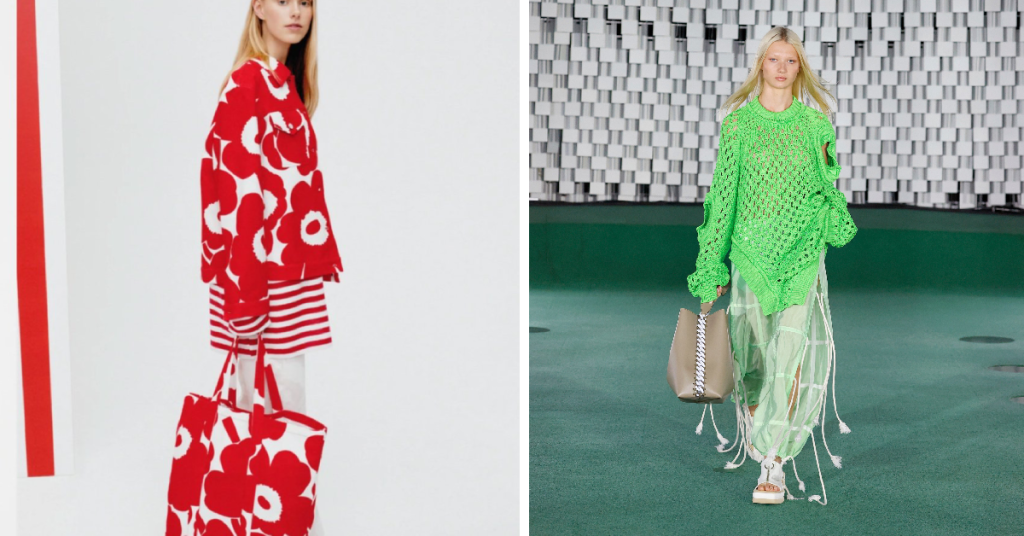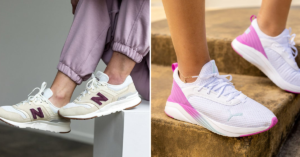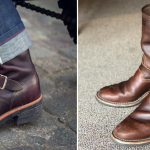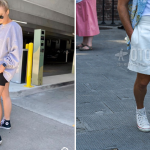Welcome to the fascinating world of sustainable textiles – a realm where innovation meets eco-consciousness. As consumers increasingly seek out products that align with their values, the fashion and textile industries are undergoing a significant evolution towards more sustainable practices. From reducing environmental impact to ensuring ethical production, the focus is shifting towards creating a more responsible and transparent supply chain.

In this article, we will delve into the current landscape of sustainable textiles, exploring the latest trends in fabric development, innovative materials, and groundbreaking technologies shaping the future of fashion. Join us on this journey to discover how biotechnology, recycling innovations, waterless dyeing techniques, and circular economy principles are revolutionizing the way textiles are produced and consumed. Let’s embark on this exploration of the intersection between style, sustainability, and technological advancement in the textile industry.
The Current Landscape of Sustainable Textiles
The fashion industry is taking a serious look at sustainability these days. It’s not just a passing trend; it’s becoming a must for brands to consider their impact on the environment. From fast-fashion giants to luxury labels, everyone seems to be jumping on the sustainable textiles bandwagon. Companies are exploring ways to reduce their carbon footprint, minimize waste, and choose eco-friendly materials. It’s refreshing to see this shift towards more responsible practices in an industry often criticized for its environmental impact.
Consumers are also becoming increasingly mindful of where their clothes come from and how they are made. The demand for sustainable fashion is on the rise, pushing brands to rethink their production processes. People are starting to ask questions about the origins of their garments, the working conditions of the workers who made them, and the environmental consequences of the production methods used. This growing awareness is fueling the movement towards sustainable textiles and driving the industry towards a more ethical and eco-conscious future.
Emerging Trends in Sustainable Fabric Development
Sustainable fabric development is all the rage in the fashion industry right now. From hemp to organic cotton, designers are exploring innovative materials that are easy on the planet. Consumers are increasingly demanding eco-friendly options, pushing brands to get creative with their fabric choices. With the rise of fast fashion, it’s refreshing to see a shift towards more sustainable practices in the industry.
One of the exciting trends we’re seeing is the use of recycled and upcycled materials in fabric production. Brands are finding ways to repurpose old garments and textiles, turning waste into new, stylish pieces. This not only reduces the environmental impact of the fashion industry but also adds a unique touch to each garment. By thinking outside the box and embracing sustainable practices, fashion designers are paving the way for a greener future in the world of textiles.
Innovative Materials: From Plant-Based to Lab-Grown Textiles
Sustainable fashion is all the rage these days, and one of the key players in this movement is the development of innovative materials. From plant-based textiles like bamboo and hemp to lab-grown fabrics such as lab-made spider silk, the textile industry is embracing new and eco-friendly alternatives to traditional materials. These innovative materials not only reduce the carbon footprint of clothing production but also offer unique properties like breathability and durability that appeal to both fashion designers and environmentally conscious consumers.
Lab-grown textiles, also known as biofabricated materials, are especially intriguing because they offer a cruelty-free and highly customizable alternative to conventional fabrics. By using biotechnology to engineer textiles from cells, researchers are able to create fabrics with specific characteristics, such as moisture-wicking abilities or UV protection. With sustainability at the forefront of the fashion industry, the rise of innovative materials marks a promising shift towards a more environmentally friendly and technologically advanced approach to clothing production.
The Role of Biotechnology in Fabric Innovation
Advancements in biotechnology are reshaping the landscape of fabric innovation, bringing forth a wave of sustainable and high-performance materials. By harnessing the power of living organisms like bacteria and yeast, scientists and designers are able to create fabrics that are not only eco-friendly but also possess unique properties such as self-cleaning or moisture-wicking capabilities.
One fascinating application of biotechnology in fabric innovation is the development of lab-grown textiles, where fibers are produced using cells in a controlled environment rather than traditional farming methods. This approach not only reduces the environmental impact of textile production but also enables the creation of customizable materials with specific characteristics, opening up a world of possibilities for the future of sustainable fashion.
Advances in Recycling Technologies for Textiles
Recycling technologies have come a long way in the textile industry, offering fresh avenues for sustainability. With concepts like upcycling gaining momentum, textile waste is being repurposed into new fabrics, reducing the strain on virgin resources. Innovations in mechanical recycling processes are transforming used textiles into quality fiber for new garments, contributing to a circular economy mindset.
Chemical recycling methods are also making waves, breaking down textile waste into molecular levels for creating new fibers. This approach minimizes the loss of material quality often seen in traditional recycling methods, paving the way for a more efficient and eco-friendly textile production cycle. As these recycling technologies continue to evolve, the fashion industry is moving closer to achieving a closed-loop system, where waste is dramatically reduced, and resources are effectively reused.
Waterless Dyeing and Finishing Techniques
The fashion industry has long been associated with water-intensive processes, particularly when it comes to dyeing and finishing textiles. However, a growing focus on sustainability has spurred the development of innovative waterless dyeing and finishing techniques. These methods aim to reduce the significant environmental impact of traditional practices by minimizing water usage and potentially harmful chemical discharge.
One promising approach involves the use of advanced technology, such as digital printing and dye sublimation, to apply color and finishes to fabrics with minimal to no water requirements. By eliminating or greatly reducing the need for large volumes of water in the dyeing and finishing stages, these techniques not only lessen the strain on water resources but also contribute to reducing energy consumption and wastewater pollution. The shift towards waterless dyeing and finishing techniques represents a significant step towards creating a more sustainable and eco-friendly future for the textile industry.
The Potential of Smart and Adaptive Fabrics
Smart and adaptive fabrics are revolutionizing the textile industry. Imagine clothing that can monitor your body temperature and adjust accordingly, ensuring optimal comfort throughout the day. These fabrics incorporate technologies like sensors and data processing to enhance functionality. For instance, sports apparel can now track your performance metrics and provide real-time feedback for improved training sessions.
The possibilities with smart and adaptive fabrics go beyond just comfort and performance. Imagine a jacket that can generate its energy to charge your devices or textiles that can change colors with a tap on your smartphone screen. These innovations not only add a fun and interactive element to fashion but also open up new avenues for customization and sustainability. As technology continues to advance, the integration of smart and adaptive fabrics into everyday clothing is becoming more accessible and exciting.
Reducing Waste: Circular Economy in Textile Production
The concept of a circular economy in textile production is gaining traction as brands and manufacturers strive to minimize waste and reduce their environmental impact. Instead of the traditional linear model of make, use, and dispose, the circular economy aims to keep resources in use for as long as possible through strategies like recycling, upcycling, and reusing materials. This shift not only benefits the planet but also offers economic opportunities for companies to tap into the growing demand for sustainable products.
By implementing strategies such as designing for durability, creating take-back programs for used garments, and integrating recycled materials into new products, companies can close the loop in their production processes. This approach not only reduces the reliance on virgin resources but also lessens the amount of textile waste ending up in landfills. Embracing the principles of the circular economy challenges traditional notions of consumption and encourages a mindset shift towards a more sustainable and responsible way of producing textiles.
Collaboration Between Fashion and Tech Industries
The fashion and tech worlds have been buddy-buddy for a while now, teaming up to create some seriously cool stuff. From smart fabrics that can light up your life to wearables that keep track of your every move, the collab game is strong. It’s like the perfect friendship – fashion brings the style, and tech brings the brains.
Nowadays, it’s all about finding that sweet spot where fashion and tech can hold hands and skip joyfully into the future together. Imagine clothes that can charge your phone or jackets that adjust their temperature based on the weather outside. The possibilities are endless when these two powerhouses put their heads together.
FAQs about The Future of Sustainable Textiles
What is the current landscape of sustainable textiles?
The fashion industry is increasingly turning towards sustainable textiles that are eco-friendly and ethically produced.
What are some emerging trends in sustainable fabric development?
Some emerging trends include using plant-based and lab-grown textiles, as well as advancements in recycling technologies for textiles.
How is biotechnology playing a role in fabric innovation?
Biotechnology is being utilized to create innovative materials and improve the sustainability of textile production.
What are waterless dyeing and finishing techniques?
Waterless dyeing and finishing techniques are methods that reduce water consumption in the dyeing and finishing process of textiles.
How can smart and adaptive fabrics benefit the fashion industry?
Smart and adaptive fabrics have the potential to revolutionize the fashion industry by offering new functionalities and sustainability benefits.
What is the circular economy in textile production?
The circular economy in textile production focuses on reducing waste and promoting the reuse and recycling of materials throughout the production process.
Why is collaboration between the fashion and tech industries important?
Collaboration between the fashion and tech industries can lead to innovative solutions for sustainable textile production and help drive positive change in the industry.
Conclusion
Sustainable textiles represent the future of fashion, where innovation and eco-consciousness intersect to create a more responsible industry. From plant-based materials to lab-grown fabrics, and from recycling technologies to waterless dyeing techniques, these advancements are reshaping how textiles are produced and consumed. As consumers become more aware of the environmental impact of their choices, the demand for sustainable options is driving significant change.
The collaboration between the fashion and tech industries, alongside the adoption of circular economy principles, is paving the way for a more sustainable and innovative future. By embracing these new technologies and practices, the textile industry can reduce waste, conserve resources, and create products that align with the values of today’s conscious consumers. The future of fashion is not just about looking good, it’s about making choices that are good for the planet too.






